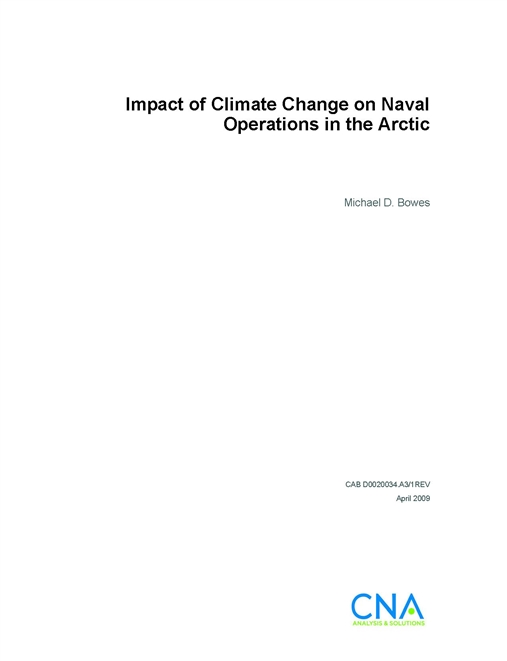In August 2007, Russia demonstrated its intent to establish a robust presence in the Arctic by planting a flag on the seabed at the North Pole in seeming validation of its territorial claims under the United Nations Convention on the Law of the Sea (UNCLOS). Around the same time, satellite images revealed a substantial reduction in Arctic ice cover as compared to previous years. By late August 2007, the Northwest Passage was ice free for the first time since satellite record-keeping began in 1978. A year later, both the Northwest Passage and Northern Sea Route were simultaneously free of ice for the first time in recorded history.
Scientists now believe that a continued trend in climate change could lead to essentially ice-free summers in the Arctic Ocean within perhaps as few as 25 years. Based on recent observed changes, it is being speculated that the Arctic, long a quiet backwater, may become an area of strategic competition and a crossroads of economic activity. Impacts of climatic change may include easier access to oil and gas supplies, new fisheries in the Beaufort or Chukchi Sea, increased tourism and commercial activity, and increased traffic through the Barents Strait.
CNA was asked to review the changing situation in the Arctic and to assess the operational implications for the Navy of the potential increase in maritime activity. The study was requested by N812 to support the 2010 Quadrennial Defense Review (QDR).
While the pace of the Arctic opening is uncertain, many scientists now expect summers to be largely free of ice by mid century. However, even with an ice-free summer, the Arctic will remain ice covered and hazardous for much of year. The commercial shipping season will be extended by little more than 2 to 3 months—to perhaps a 4-month season above Alaska.
To a degree, the likelihood of increases in maritime traffic in the Arctic Ocean by mid-century has been oversold. On one hand, with the limited shipping season, lack of support facilities, continuing ice hazards, and schedule uncertainties, it is unlikely we will see substantial increases in cargo transit across the Arctic within the next 20 years—despite the potential distance saved on intercontinental routes. On the other hand, there will almost certainly be some expansion in destination traffic related to local supply needs, resource extraction, and tourism in the near future. Indeed, the waters above Alaska are already accessible by mid-August into September and cruise traffic is growing.
Because of the possibility of increased offshore drilling, cruise ships, and fisheries eventually moving north, issues of ship safety, search and rescue (SAR), oil spills, fisheries enforcement, and maritime awareness become the immediate drivers for an expanded presence. These are issues that call primarily for a Coast Guard presence.
Download reportApproved for Public Release: Distribution Unlimited.
Details
- Pages: 52
- Document Number: CAB D0020034.A3/1REV
- Publication Date: 4/23/2009
